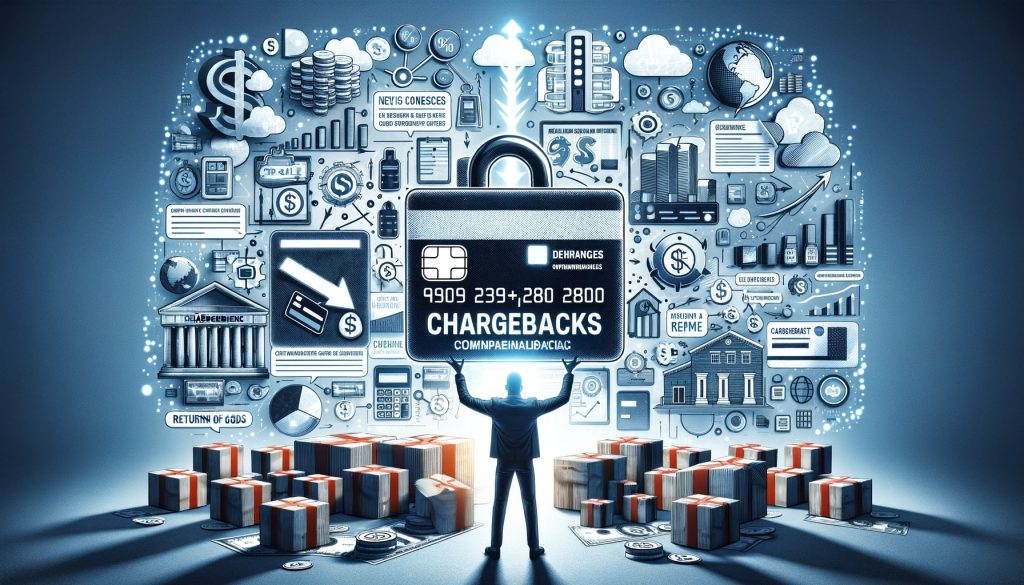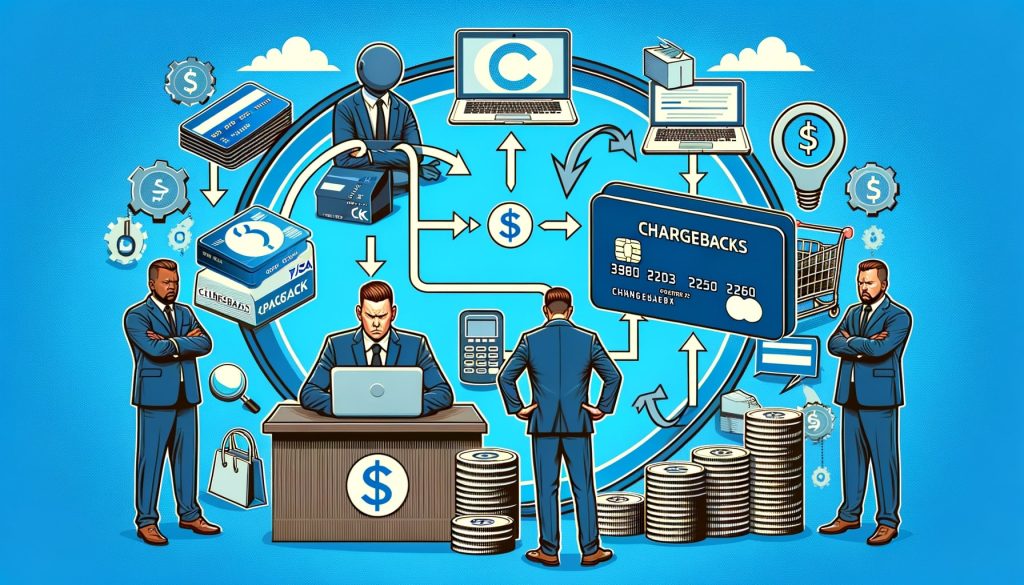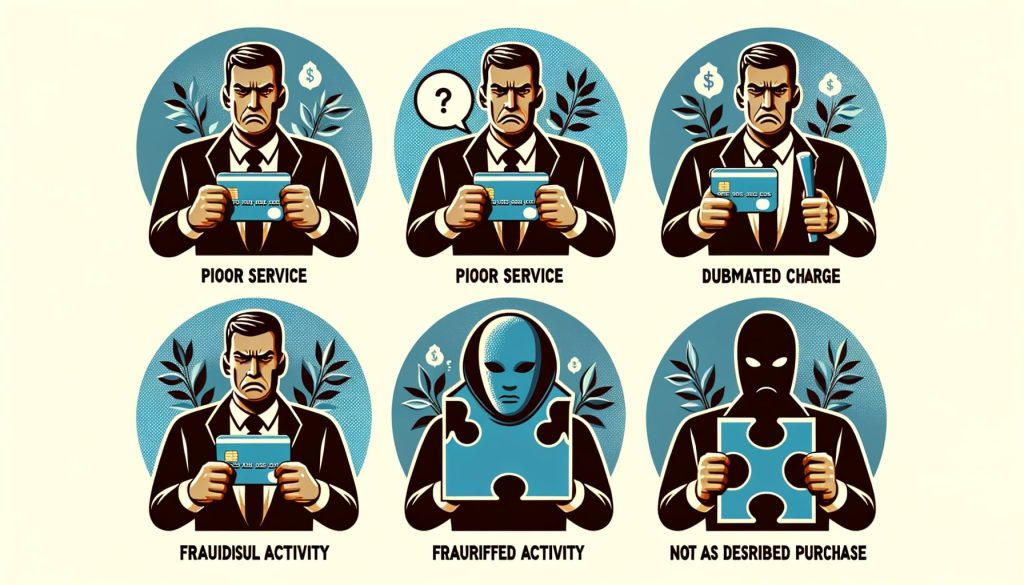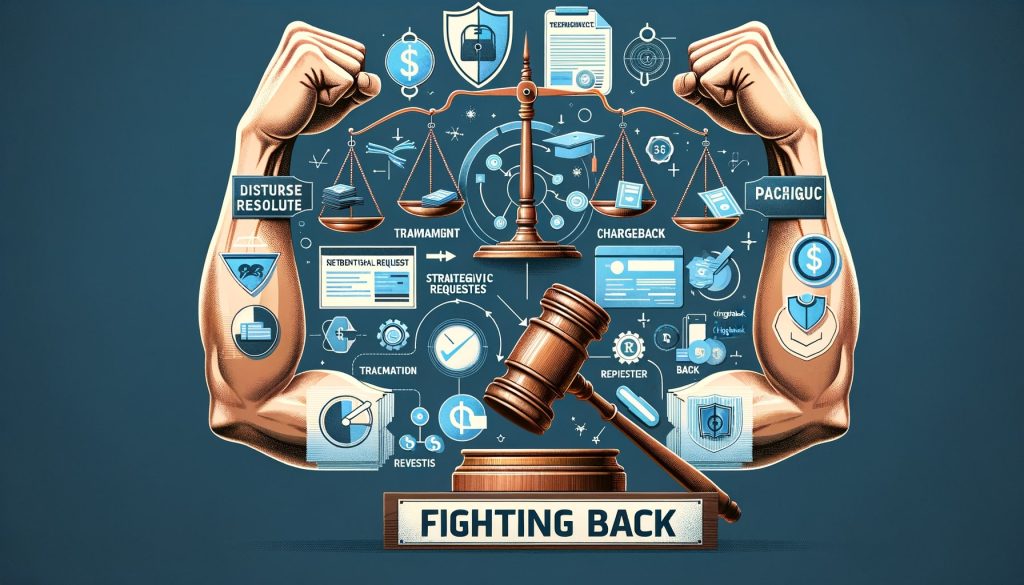Chargeback ratios are a critical metric for businesses that accept credit card payments. They provide insights into the number of chargebacks a business receives in relation to its total sales volume. Understanding chargeback ratios is essential for managing risk, maintaining healthy customer relationships, and ensuring the financial stability of a business.
A chargeback occurs when a customer disputes a credit card transaction and requests a refund from their issuing bank. Chargebacks can be initiated for various reasons, including fraud, dissatisfaction with a product or service, or unauthorized transactions. When a chargeback is filed, the merchant is required to provide evidence to prove the validity of the transaction. If the merchant fails to do so, the funds are returned to the customer, and the merchant is liable for the chargeback amount.
What is a Chargeback Ratio?
A chargeback ratio is the percentage of chargebacks a merchant receives relative to their total number of transactions in a specific period. Payment processors and credit card networks, such as Visa and Mastercard, monitor these ratios closely to assess the level of risk associated with doing business with a particular merchant. A high chargeback ratio signals potential issues such as fraud, poor customer service, or non-delivery of products and services.
The chargeback ratio is calculated using the following formula:
Chargeback Ratio = (Number of Chargebacks / Number of Transactions) × 100
For example, if a business processes 1,000 transactions in a month and receives 10 chargebacks, its chargeback ratio would be 1%. Different payment processors may have varying thresholds for what constitutes a high chargeback ratio, but in most cases, a ratio above 1% is considered problematic.
Why Chargeback Ratios Matter
Chargeback ratios are significant for several reasons:
- Risk Assessment: A high chargeback ratio is a red flag for payment processors and card networks. It indicates a higher likelihood of fraud or customer dissatisfaction, both of which pose financial risks to the processor.
- Fees and Penalties: Merchants with high chargeback ratios are often subject to increased processing fees, penalties, and fines from card networks. Payment processors may charge additional fees for each chargeback, which can add up quickly.
- Merchant Account Status: Excessive chargebacks can result in the suspension or termination of a merchant’s account. If a payment processor deems a business too risky, they may close the account, making it difficult for the merchant to accept credit card payments.
- Reputation: High chargeback ratios can harm a business’s reputation with payment processors, customers, and financial institutions. A business with frequent disputes is often viewed as unreliable or untrustworthy.
Industry Standards for Chargeback Ratios
Different card networks and payment processors set their own thresholds for acceptable chargeback ratios. In general, the following benchmarks apply:
- Visa and Mastercard: Typically, a chargeback ratio above 1% is considered high risk. Visa and Mastercard may impose penalties on businesses that consistently exceed this threshold.
- American Express and Discover: These card networks may have stricter or more lenient thresholds depending on the type of business and industry, but a chargeback ratio above 1% is generally frowned upon.
- High-Risk Businesses: Certain industries, such as e-commerce, subscription services, and travel, are considered high-risk for chargebacks. Payment processors may allow slightly higher chargeback ratios for these businesses, but they still need to keep the ratio within a manageable range.
The Significance of Chargeback Ratios in Business Operations
Chargeback ratios play a crucial role in the day-to-day operations of businesses that accept credit card payments. They serve as a key performance indicator (KPI) for assessing the health of a business’s payment processing system and its overall risk exposure. By monitoring chargeback ratios, businesses can identify potential issues, implement preventive measures, and maintain a positive reputation with payment processors and acquiring banks.
High chargeback ratios can have severe consequences for businesses. Acquiring banks and payment processors impose chargeback thresholds, which are the maximum allowable chargeback ratios. If a business exceeds these thresholds, it may face penalties, increased processing fees, or even the termination of its merchant account. Additionally, excessive chargebacks can damage a business’s reputation, leading to loss of customer trust and potential revenue.
On the other hand, low chargeback ratios indicate a healthy payment processing system and satisfied customers. This can result in lower processing fees, better relationships with acquiring banks, and increased customer loyalty. By understanding the significance of chargeback ratios, businesses can proactively manage their risk and optimize their operations.
Factors Influencing Chargeback Ratios: Identifying the Key Drivers

Several factors can influence chargeback ratios, and understanding these drivers is essential for effectively managing and reducing chargebacks. By identifying the key drivers, businesses can implement targeted strategies to address the root causes and minimize chargeback ratios.
- Fraudulent Transactions: One of the primary drivers of chargebacks is fraudulent transactions. Fraudsters use stolen credit card information to make unauthorized purchases, leaving the legitimate cardholder to file a chargeback. Implementing robust fraud prevention measures, such as address verification system (AVS), card security codes (CVV), and fraud detection tools, can help mitigate the risk of fraudulent transactions and reduce chargeback ratios.
- Dissatisfied Customers: Dissatisfied customers often resort to chargebacks as a way to seek refunds for products or services they are unhappy with. This can be due to issues such as late deliveries, damaged goods, or poor customer service. To address this driver, businesses should focus on improving their customer experience, providing clear communication, and promptly resolving customer complaints or issues.
- Unauthorized Transactions: Chargebacks can also occur when a customer disputes a transaction they did not authorize. This can happen in cases of identity theft or when a family member or employee misuses a credit card. To minimize unauthorized transactions, businesses should implement secure payment processing systems, educate customers about transaction security, and promptly investigate any reported unauthorized transactions.
- Inadequate Product Descriptions: Unclear or misleading product descriptions can lead to customer dissatisfaction and chargebacks. To mitigate this driver, businesses should ensure that their product descriptions accurately represent the features, specifications, and limitations of their products. Providing clear and detailed information can help set realistic customer expectations and reduce the likelihood of chargebacks.
- Poor Customer Service: Inadequate customer service can contribute to chargebacks, as customers may feel frustrated or ignored when attempting to resolve issues with a business. By investing in training and empowering customer service representatives to handle customer inquiries and complaints effectively, businesses can improve customer satisfaction and reduce the likelihood of chargebacks.
Calculating and Interpreting Chargeback Ratios: A Step-by-Step Guide

Calculating and interpreting chargeback ratios is essential for businesses to understand their risk exposure and take appropriate actions to manage chargebacks effectively. Here is a step-by-step guide on how to calculate and interpret chargeback ratios:
- Step 1: Determine the time period for calculation. Chargeback ratios are typically calculated on a monthly basis, but businesses can choose any time period that suits their needs.
- Step 2: Gather the necessary data. Collect the total number of sales transactions and the total number of chargebacks within the chosen time period.
- Step 3: Calculate the chargeback ratio. Divide the total number of chargebacks by the total number of sales transactions and multiply by 100 to get the chargeback ratio as a percentage.
- Step 4: Interpret the chargeback ratio. Compare the calculated chargeback ratio to industry benchmarks and the chargeback thresholds set by acquiring banks and payment processors. A chargeback ratio below the industry average and within the acceptable threshold indicates a healthy payment processing system, while a ratio above the threshold may require immediate attention.
- Step 5: Analyze trends and patterns. Monitor chargeback ratios over time to identify any significant changes or patterns. Sudden increases in chargeback ratios may indicate underlying issues that need to be addressed promptly.
- Step 6: Take appropriate actions. Based on the interpretation and analysis of chargeback ratios, businesses should implement strategies to manage and reduce chargebacks. These strategies may include improving fraud prevention measures, enhancing customer service, or revising product descriptions.
The Impact of High Chargeback Ratios on Businesses: Risks and Consequences

High chargeback ratios can have severe consequences for businesses, both financially and operationally. Understanding the risks and consequences associated with high chargeback ratios is crucial for businesses to take proactive measures and mitigate potential damages.
- Financial Losses: Chargebacks result in direct financial losses for businesses. When a chargeback is filed, the merchant is liable for the chargeback amount, plus any associated fees. This means that the business not only loses the revenue from the original transaction but also incurs additional costs. High chargeback ratios can significantly impact a business’s profitability and cash flow.
- Penalties and Increased Processing Fees: Acquiring banks and payment processors impose penalties and increased processing fees on businesses with high chargeback ratios. These penalties can range from fines to higher transaction fees or even the termination of the merchant account. The financial burden of penalties and increased fees can further strain a business’s resources and profitability.
- Damage to Reputation: Excessive chargebacks can damage a business’s reputation and erode customer trust. When customers see a high number of chargebacks associated with a business, they may perceive it as unreliable or untrustworthy. This can lead to a loss of existing customers and deter potential customers from making purchases, resulting in a decline in revenue.
- Limited Access to Payment Processing Services: Acquiring banks and payment processors closely monitor chargeback ratios to assess the risk associated with a business. If a business consistently exceeds chargeback thresholds, it may face difficulties in obtaining or maintaining payment processing services. Limited access to payment processing services can severely impact a business’s ability to accept credit card payments and hinder its growth potential.
- Operational Disruptions: High chargeback ratios can disrupt a business’s operations and divert resources away from core activities. Dealing with chargebacks requires time, effort, and resources, including gathering evidence, responding to chargeback notifications, and managing disputes. These operational disruptions can distract businesses from focusing on growth, customer acquisition, and other critical aspects of their operations.
Strategies for Managing and Reducing Chargeback Ratios: Best Practices

To effectively manage and reduce chargeback ratios, businesses should implement a comprehensive set of strategies and best practices. By proactively addressing the root causes of chargebacks and implementing preventive measures, businesses can minimize their risk exposure and maintain healthy customer relationships. Here are some strategies for managing and reducing chargeback ratios:
- Implement Robust Fraud Prevention Measures: Fraudulent transactions are a significant driver of chargebacks. Businesses should invest in robust fraud prevention measures, such as AVS, CVV, and fraud detection tools, to minimize the risk of fraudulent transactions. These measures can help verify the authenticity of transactions and detect potential fraud before it leads to chargebacks.
- Improve Customer Service: Dissatisfied customers often resort to chargebacks as a way to seek refunds or resolve issues. By providing excellent customer service, businesses can address customer concerns promptly and effectively, reducing the likelihood of chargebacks. Training customer service representatives to handle customer inquiries and complaints empathetically and efficiently can significantly improve customer satisfaction and loyalty.
- Enhance Product Descriptions: Clear and accurate product descriptions can help set realistic customer expectations and reduce the likelihood of chargebacks due to dissatisfaction. Businesses should ensure that their product descriptions provide comprehensive information about the features, specifications, and limitations of their products. Including high-quality images and detailed product descriptions can help customers make informed purchasing decisions and minimize the risk of chargebacks.
- Optimize Order Fulfillment and Delivery Processes: Late deliveries, damaged goods, or incorrect shipments can lead to customer dissatisfaction and chargebacks. By optimizing their order fulfillment and delivery processes, businesses can ensure timely and accurate deliveries, reducing the likelihood of chargebacks. Implementing order tracking systems, providing shipping notifications, and promptly addressing any delivery issues can significantly improve the customer experience and minimize chargebacks.
- Establish Clear Return and Refund Policies: Clear and transparent return and refund policies can help manage customer expectations and reduce the likelihood of chargebacks. Businesses should clearly communicate their policies regarding returns, refunds, and exchanges, including any applicable fees or conditions. Providing easy-to-understand instructions for initiating returns or refunds can help customers navigate the process and minimize the need for chargebacks.
- Monitor and Analyze Chargeback Data: Regularly monitoring and analyzing chargeback data can provide valuable insights into the root causes of chargebacks and help businesses identify trends or patterns. By understanding the underlying reasons for chargebacks, businesses can implement targeted strategies to address the specific drivers and reduce chargeback ratios effectively.
- Collaborate with Payment Processors and Acquiring Banks: Building strong relationships with payment processors and acquiring banks is crucial for effectively managing chargebacks. Businesses should actively communicate with their payment partners, seek guidance on chargeback prevention strategies, and stay updated on industry best practices. Collaborating with payment processors and acquiring banks can help businesses navigate the complex landscape of chargebacks and optimize their payment processing systems.
Implementing Effective Fraud Prevention Measures to Minimize Chargebacks

Fraud prevention is a critical aspect of managing chargebacks and minimizing risk exposure for businesses. Implementing effective fraud prevention measures can help businesses detect and prevent fraudulent transactions, reducing chargeback ratios and protecting their financial stability. Here are some key fraud prevention measures businesses can implement:
- Address Verification Systems (AVS): AVS is a fraud prevention tool that verifies the billing address provided by the customer during a transaction. By comparing the billing address with the address on file with the issuing bank, businesses can detect potential discrepancies and flag suspicious transactions for further investigation.
- Card Security Codes (CVV): CVV is a three- or four-digit code printed on credit cards. By requiring customers to provide the CVV during a transaction, businesses can verify that the customer has physical possession of the card. This adds an additional layer of security and helps prevent fraudulent transactions.
- Fraud Detection Tools: Advanced fraud detection tools use machine learning algorithms and artificial intelligence to analyze transaction data and identify patterns indicative of fraudulent activity. These tools can detect anomalies, such as unusually high-value transactions, multiple transactions from the same IP address, or transactions from high-risk countries. By leveraging these tools, businesses can proactively identify and prevent fraudulent transactions before they result in chargebacks.
- 3D Secure Authentication: 3D Secure is an additional layer of security that adds an extra step to the online payment process. It requires customers to authenticate their identity using a password or a one-time code sent to their mobile device. By implementing 3D Secure authentication, businesses can reduce the risk of unauthorized transactions and minimize chargeback ratios.
- Transaction Velocity Filters: Transaction velocity filters monitor the frequency and volume of transactions from a specific customer or IP address within a given time period. Unusually high transaction velocity can indicate fraudulent activity, such as a fraudster testing stolen credit card information. By setting transaction velocity filters, businesses can automatically flag and review suspicious transactions, reducing the risk of chargebacks.
- Manual Review of High-Risk Transactions: For transactions that are flagged as potentially high-risk by fraud prevention tools or filters, businesses should conduct manual reviews. Manual reviews involve analyzing transaction details, customer information, and any additional evidence to determine the legitimacy of the transaction. By conducting thorough manual reviews, businesses can prevent fraudulent transactions from resulting in chargebacks.
- Stay Updated on Fraud Trends: Fraudsters constantly evolve their tactics, making it essential for businesses to stay updated on the latest fraud trends and prevention techniques. Businesses should actively participate in industry forums, attend fraud prevention conferences, and collaborate with payment processors and acquiring banks to stay informed about emerging fraud threats. By staying ahead of fraud trends, businesses can proactively implement preventive measures and minimize chargeback ratios.
Chargeback Disputes and Representment: Navigating the Process
When a chargeback occurs, merchants have the option to dispute the chargeback through a process known as representment. Representment allows merchants to provide evidence and arguments to challenge the validity of a chargeback and potentially reverse the chargeback decision. Navigating the chargeback dispute and representment process effectively is crucial for merchants to protect their revenue and reputation. Here is a step-by-step guide on how to navigate the chargeback dispute and representment process:
- Step 1: Understand the Reason Code – Each chargeback is associated with a reason code that indicates the specific reason for the dispute. Merchants should carefully review the reason code to understand the customer’s claim and gather relevant evidence to support their case.
- Step 2: Gather Evidence – Merchants should collect all relevant evidence to support their position during the dispute process. This may include order confirmation emails, shipping receipts, customer communication records, and any other documentation that can help prove the validity of the transaction.
- Step 3: Prepare a Compelling Case – Based on the gathered evidence, merchants should prepare a compelling case to challenge the chargeback. This may involve providing detailed explanations, highlighting relevant policies, and demonstrating that the customer received the product or service as described.
- Step 4: Submit the Dispute – Merchants should follow the specific procedures outlined by their payment processor or acquiring bank to submit the dispute. This typically involves providing the necessary documentation and completing the required forms within the designated timeframe.
- Step 5: Monitor the Dispute Process – After submitting the dispute, merchants should closely monitor the progress of the dispute process. This includes tracking the status of the dispute, providing any additional requested information promptly, and adhering to any deadlines or requirements.
- Step 6: Communicate with the Customer – In some cases, merchants may need to communicate directly with the customer during the dispute process. Clear and professional communication can help resolve misunderstandings and potentially reach a mutually satisfactory resolution without the need for further escalation.
- Step 7: Evaluate the Outcome – Once a decision is reached, merchants should evaluate the outcome of the dispute. If the chargeback is successfully reversed, the merchant’s revenue will be restored. However, if the chargeback is upheld, merchants should analyze the reasons behind the decision and identify any areas for improvement in their processes or customer interactions.
Chargeback Ratios in Different Industries: Understanding Industry-Specific Challenges
Chargeback ratios can vary significantly across different industries due to industry-specific challenges and characteristics. Understanding these industry-specific challenges is crucial for merchants to develop targeted strategies to manage and reduce chargebacks effectively. Here are some examples of chargeback ratios in different industries and the associated challenges:
- E-commerce: The e-commerce industry faces unique challenges due to the nature of online transactions. Chargeback ratios in e-commerce can range from 0.5% to 2%, depending on various factors such as the product category, customer demographics, and fraud prevention measures in place. E-commerce merchants often encounter challenges related to fraud, customer disputes, and delivery issues. Implementing robust fraud prevention measures, providing excellent customer service, and optimizing the delivery process are essential for managing chargeback ratios in the e-commerce industry.
- Travel and Hospitality: The travel and hospitality industry is considered high-risk due to factors such as long booking lead times, cancellations, and disputes over service quality. Chargeback ratios in this industry can range from 1% to 3%. Merchants in this industry should focus on clear communication, accurate descriptions of services, and efficient dispute resolution processes to manage chargebacks effectively.
- Subscription-based Services: Subscription-based businesses, such as streaming platforms or subscription boxes, often face challenges related to customer churn and dissatisfaction. Chargeback ratios in this industry can range from 0.5% to 2%. Merchants should prioritize providing exceptional customer service, offering flexible cancellation policies, and regularly reviewing and updating subscription terms to minimize chargebacks.
- Online Gaming and Gambling: The online gaming and gambling industry is highly susceptible to fraud and disputes due to the virtual nature of transactions and the potential for addictive behavior. Chargeback ratios in this industry can range from 2% to 5%. Merchants in this industry should implement stringent age verification processes, robust fraud prevention measures, and effective responsible gambling policies to manage chargebacks effectively.
The Role of Payment Processors in Managing Chargeback Ratios
Payment processors play a crucial role in monitoring and managing a business’s chargeback ratios. They are the intermediaries between merchants and credit card networks and are responsible for ensuring compliance with industry standards.
Monitoring Chargeback Ratios
Payment processors regularly monitor chargeback ratios to assess a business’s risk level. Merchants with consistently high chargeback ratios may face increased scrutiny or penalties from their payment processors. Most processors aim to keep chargeback ratios below 1% to minimize financial risk.
Chargeback Protection Programs
Many payment processors offer chargeback protection programs that help merchants manage disputes more effectively. These programs typically include features like automatic notifications of chargebacks, detailed reporting, and tools to help resolve disputes.
Consequences of High Chargeback Ratios
If a merchant’s chargeback ratio consistently exceeds acceptable limits, payment processors may impose various consequences, including:
- Higher Fees: Merchants with high chargeback ratios may be subject to increased processing fees, as they are deemed riskier to work with.
- Rolling Reserves: Some payment processors may withhold a percentage of the merchant’s funds in a rolling reserve account to protect against future chargebacks.
- Account Termination: In severe cases, if a merchant’s chargeback ratio remains high despite corrective actions, the payment processor may terminate the merchant account, making it impossible for the business to accept credit card payments.
Tools and Technology to Help Manage Chargeback Ratios
Leveraging tools and technology can be instrumental in reducing chargebacks and keeping chargeback ratios low. Here are some key technologies to consider:
Fraud Detection Software
Fraud detection software uses algorithms and machine learning to detect suspicious transactions and prevent fraudulent activity. These tools analyze data patterns to flag high-risk transactions before they are processed, reducing the likelihood of chargebacks due to fraud.
Chargeback Alerts
Chargeback alert services notify merchants as soon as a chargeback is initiated, giving them the opportunity to resolve the dispute directly with the customer before the chargeback is processed. This proactive approach allows merchants to refund customers or offer solutions to avoid formal chargebacks.
Chargeback Management Platforms
Comprehensive chargeback management platforms offer businesses an all-in-one solution for tracking, disputing, and resolving chargebacks. These platforms provide detailed analytics, real-time monitoring, and reporting tools to help merchants identify trends and take action to reduce chargeback ratios.
FAQs
Q1: What is a chargeback ratio?
A chargeback ratio is the percentage of chargebacks a merchant receives relative to their total transactions within a specific period. It is used by payment processors and card networks to assess a merchant’s risk level.
Q2: What is considered a high chargeback ratio?
A chargeback ratio above 1% is generally considered high by most payment processors. Merchants with ratios exceeding this threshold may face penalties, higher fees, or account termination.
Q3: How can I calculate my chargeback ratio?
To calculate your chargeback ratio, divide the number of chargebacks by the total number of transactions in a given period, then multiply by 100 to get the percentage.
Q4: How can I reduce chargeback ratios?
You can reduce chargeback ratios by improving customer service, implementing fraud prevention tools, offering clear refund and return policies, using clear billing descriptors, and tracking chargeback trends regularly.
Q5: What happens if my chargeback ratio is too high?
If your chargeback ratio is too high, you may face increased fees, rolling reserves, or even account termination by your payment processor. It’s important to take proactive steps to manage and reduce chargebacks.
Q6: Are chargebacks always the merchant’s fault?
Not necessarily. Chargebacks can occur due to fraud, customer confusion, delivery issues, or technical errors. While some chargebacks result from merchant mistakes, others are outside of the merchant’s control.
Q7: Can chargeback ratios affect my relationship with payment processors?
Yes, high chargeback ratios can damage your relationship with payment processors. Processors may classify your business as high-risk, impose higher fees, or terminate your account if the ratio remains elevated.
Q8: Can chargeback prevention tools eliminate all chargebacks?
No, while chargeback prevention tools can significantly reduce chargebacks, no solution can eliminate them entirely. However, using these tools in combination with best practices can help minimize the occurrence of chargebacks.
Conclusion
Chargeback ratios are a critical metric for businesses that accept credit card payments. Understanding the basics of chargeback ratios, identifying the key drivers, and implementing effective strategies to manage and reduce chargebacks are essential for maintaining healthy relationships with payment processors and acquiring banks, protecting revenue, and ensuring customer satisfaction.
By implementing robust fraud prevention measures, providing excellent customer service, optimizing product descriptions and purchase processes, and continuously monitoring and analyzing chargeback data, merchants can proactively manage chargeback ratios and minimize the impact of chargebacks on their business. Additionally, navigating the chargeback dispute and representment process effectively can help merchants protect their revenue and reputation.
While chargeback ratios can vary across different industries, understanding industry-specific challenges and implementing targeted strategies can help merchants effectively manage chargebacks and maintain a healthy business environment. By prioritizing customer satisfaction, clear communication, and continuous improvement, merchants can minimize chargebacks and build long-term relationships with their customers.












